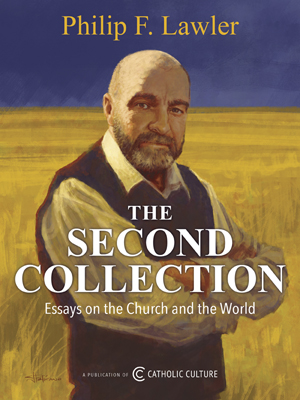Brain Death
If "brain death" and death were identical and equivalent, there would not be a need for the term "brain death." Everyone knows that the body, the remains that are viewed at a funeral home, is dead. Compare that body to the patient in an intensive care unit who has been declared "brain dead" but who is receiving ventilatory support.* The heart is beating, the blood pressure and temperature are being recorded, the color is normal, if the knee is tapped the knee jumps, and many internal organs and systems are functioning.
In the past, the physician took the time needed to determine death because he did not wish to treat the living is dead. Today, however, death is often declared for reasons not related to the patient's welfare — such as organ transplantation, cost containment, and propagation of the euthanasia movement. How did this change occur?
Before 1968 the term "brain death" did not exist. A physician pronounced death when there was no breathing, no heart beat and no response to stimulation. The removal of a beating heart for transplantation would have constituted murder under traditional standards for determining death.
Then the Journal of the American Medical Association (JAMA) published an article entitled "A Definition of Irreversible Coma" (Vol. 205:337-340,1968). This article included the Harvard Criteria which claimed irreversible coma represented "brain death." The newly coined "brain death" conveniently allowed the "harvesting" of vital organs for transplantation.
By 1978 there were more than 30 different sets of criteria for determining "brain death" published in the medical literature. Every set since the Harvard Criteria has become less strict. For instance, the Harvard Criteria required that the patient be in a coma at least 24 hours. Other sets of criteria shortened the time to 12 hours, then six hours. More recently, in the Cleveland Clinic Quarterly, it was suggested that, after fulfilling certain clinical caveats, the patient can be taken off the ventilator for 30 to 60 seconds and, if there is no breathing, the patient may be pronounced "dead." Other sets of criteria do not even require an electroencephalogram (EEG, a recording of electrical activity from the surface of the brain) — an omission that could result in a patient with cortical activity (memory, feelings, emotion, etc.) being declared "dead."
A physician is free to use any set of criteria. Thus, a patient could be determined to be dead by one set, but not by another.
Ironically, a patient who is determined to be "dead" (i.e. for transplantation or experimental purposes) is sometimes treated as if alive. Suction and postural drainage is done to prevent pneumonia. The patient is turned to prevent bed sores. How can a cadaver develop pneumonia or a bed sore?
An editorial in JAMA on September 3, 1982, states: "...[W]e are told a brain dead patient can nurture a child in the womb, which permits live birth several weeks 'postmortem.' Perhaps this is the last straw that breaks the conceptual camel's back...the death of the brain seems not to serve as a boundary; it is a tragic, ultimately fatal, loss. but not death itself."
Today, even though the medical community is divided about whether "brain death" is synonymous with death, every state has a "brain death" law. Nevertheless, as Dr. Stuart Youngner wrote in a letter to the editor of the New England Journal of Medicine, November 17, 1994, "The signs of life in brain dead patients...are very real and cannot be discounted in human terms, even if we have done so in public policy."
For more information:
Byrne, MD, Colliton, MD, Evers, MD, et al., Life. Life Support, and Death: Principles. Guidelines. Policies and Procedures for Making Decisions That Respect Life (American Life League, 1996)
*A ventilator—commonly, but not accurately, called a respirator—may be required to support, not supplant, respiration. It is the person, not the machine, who breathes.
© Human Life Alliance of Minnesota Education Fund, Inc., 3570 Lexingotn Ave. N, Suite 205, St. Paul, MN 55126
This item 830 digitally provided courtesy of CatholicCulture.org






